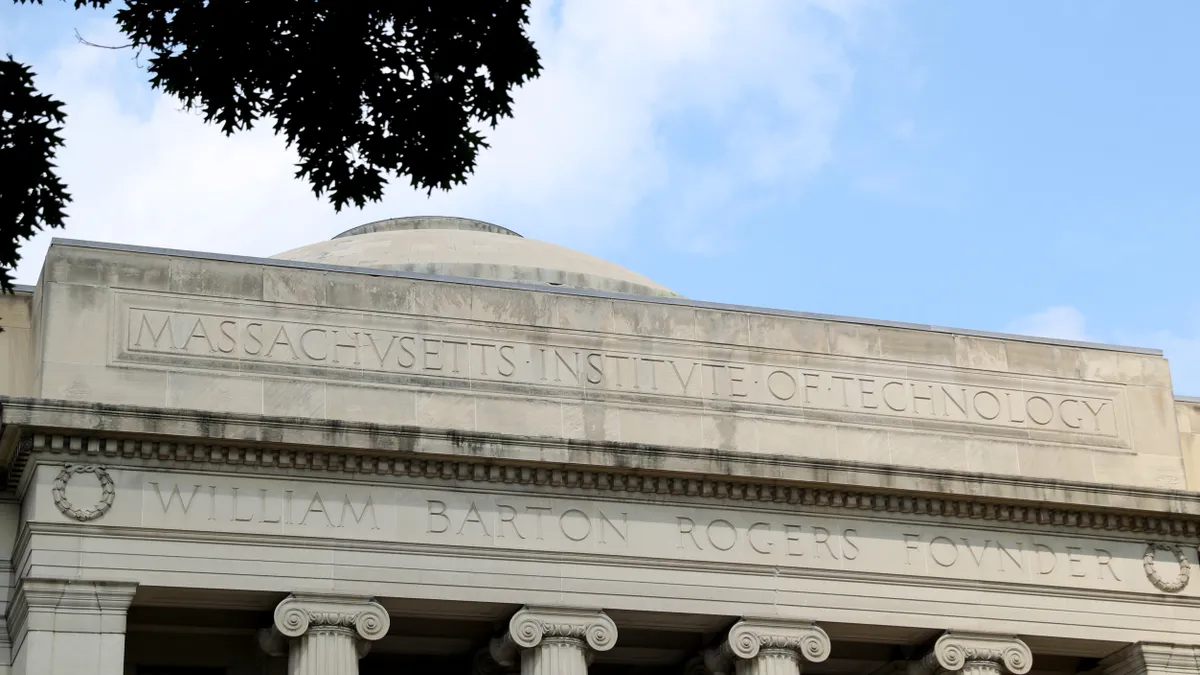Much like his classmates, Amon Burton was trying to figure out what he would do after his time as a student at Stanford University came to an end. But the 70-year-old's prospects were slightly different from those of the mostly 20- and 30-somethings he was studying among.
Burton had spent 40 years practicing law, and he was looking for a way to transition to the next stage of life. That's part of the reason he went to Stanford, where the Distinguished Careers Institute (DCI) gives accomplished professionals nearing the end of their primary careers an opportunity to go back to school to retool for what's next.
"It's not about coming to audit a class," he told Education Dive. "This is really about a cohesive group of cohorts taking classes and sharing information."
Bringing older adults into the campus fold isn't a new concept. Many public colleges offer free or reduced tuition for this group. Some adhere to principles that make their institutions more accessible to older learners. And programs like the Osher Lifelong Learning Institutes, which are on more than 100 campuses, cater to this demographic with a variety of educational experiences, including some that immerse them in classes with traditional-age students.
Developers and colleges have also partnered to build senior housing on or near campuses, furthering opportunities for intergenerational living and learning. Among the latest is Arizona State University's Mirabella senior living facility. Its residents will be able to take classes and use other campus resources.
Their interest underscores a major demographic shift that's underway in the U.S. The number of adults age 65 and older is expected to nearly double between 2018 and 2060. And by 2034, they will outnumber those under the age of 18. Meanwhile, colleges in many parts of the country are staring down flat or dwindling enrollment projections.
Stanford's program, and others like it at the University of Notre Dame and the University of Texas at Austin, are narrow examples of how colleges are tapping this market. Their programs are exclusive, small-scale and highly structured, with tuition running in the mid-five figures.
But they may have payoffs down the road that address colleges' desire for more and varied revenue sources, generating new alumni or rekindling relationships that could yield donations or partnerships, according to representatives from these and other programs speaking at the Association of American Colleges and Universities (AAC&U) conference in Washington, D.C., last week.
Although this outcome can be important, experts caution that the programs should be undertaken to advance intergenerational learning on campus and to support older learners' unique needs. One of the ways they can do that is by offering participants room to grow.
"When adults come into the program, they oftentimes think that what they're good at and what they are able to understand is very narrow," said Thomas Schreier Jr., founding director of the Inspired Leadership Initiative at Notre Dame, during the conference.
But those participants, who have ranged from their late 40s to their early 80s, he said, "all believe that they have a next act."
'Not one-directional'
At Stanford, Burton became interested in studying climate change. That led him to classes in topics such as atmospheric science and sustainability, as well as those dealing with the related economic, social, legal and ethical issues.
After completing the program, he combined his newfound interest with his professional background to teach a class at UT Austin about the law and ethics of climate change. He also founded and led an undergraduate fellowship on climate change this past fall.
What's more, he brought the DCI concept to the Texas flagship, co-founding the Tower Fellows Program, for which he is now a mentor.
The programs at Stanford, UT Austin and Notre Dame have much in common. They run between nine and 12 months. Cohorts are no more than a few dozen students who attend classes and are encouraged to live near campus. And while they go to classes with typical students, they meet with the other fellows to discuss their experiences. They also may receive counseling and instruction in topics such as wellness, and they are encouraged to participate in campus events. At Notre Dame, participants also get a spiritual advisor.
Their partners or spouses can attend the programs, too, for a fee. Participants are at a phase of life where they may want to spend more time with that person, Schreier told Education Dive in an email. It can also help if both people understand "the nature and transformative purpose of the program so that they aren't surprised by the profound and meaningful changes being experienced by the fellow," he added.
The programs are structured largely around intergenerational learning — and not just for older adults.
In the case of something like a 20th-century history class, for instance, "the enrichment comes in the firsthand narrative learning of students and in the opportunity for older adults to give back from their knowledge," said Tom Meuser, founding director of the Center for Excellence in Aging and Health at the University of New England, in an interview with Education Dive.
"Intergenerational learning is not one-directional," he added. "It really has to go both ways."
'A powerful contribution'
Colleges designing immersive learning experiences for older adults should start by assessing the market of learners they want to attract and asking participants what they want to get out of the program, said Brian Carpenter, a psychology and brain sciences professor at Washington University in St. Louis, who researches the clinical psychology of aging.
Some want to work in other fields, such as the nonprofit sector or public policy. Others may be drawn to today's college experiences.
"A lot of our fellows have mentioned things like they've seen their kids go off to college, they've paid for their tuition, they've seen the experiences they've had and have come back and said, 'I want to do that. College wasn't like that when I was there,'" said Kate Schaefers, executive director of the University of Minnesota's Advanced Careers initiative, at the AAC&U conference.
That program, which is similar to the other offerings but is roughly a quarter the cost, bills itself on its website as "a gap year for grown-ups as they transition from career jobs into what's next."
It's also important to acknowledge that older and younger generations have experienced the educational system at different times — and therefore may have different expectations for their learning experiences — making it critical to establish standards, Carpenter said.
Technology can also be a hurdle. Programs should be clear about whether learners will be required to use the learning management system or other platforms to access course material. He recommends assessing participants' comfort and competence with technology before the program starts.
Colleges should also work out whether they are using these programs solely to tap into their alumni base, or if they expect to reach out into the local community and beyond, Meuser said. At Notre Dame, about two-thirds of participants didn't attend the university as traditional students, according to Schreier.
An institution's profile can factor into whether it is able to stand up a similar program. A college or university with a strong alumni base, large endowment and faculty eager to participate may have an easier time attracting older alumni to co-locate and become part of the university experience, Meuser said.
"Intergenerational learning is not one-directional. It really has to go both ways."

Tom Meuser
Founding director, Center for Excellence in Aging and Health
Whether they'll be major drivers of tuition revenue or donations is unclear. Notre Dame and UT Austin are only in their second cohorts. Stanford's DCI, a model for both of the programs, has been offered since 2015, though it expanded to offer up to another year and a network from program alumni.
Meuser suggested these kinds of programs may have less of an impact on revenue at better-resourced institutions than at smaller, tuition-driven schools.
Early results point to partnerships as one benefit. Schreier told Education Dive in an email that two fellows from the inaugural cohort of Notre Dame's program are now working at the university — one on career placement for humanities graduates and the other on developing lifelong learning.
Their "passion for these pursuits coupled with their experience is a powerful contribution," he said.


















